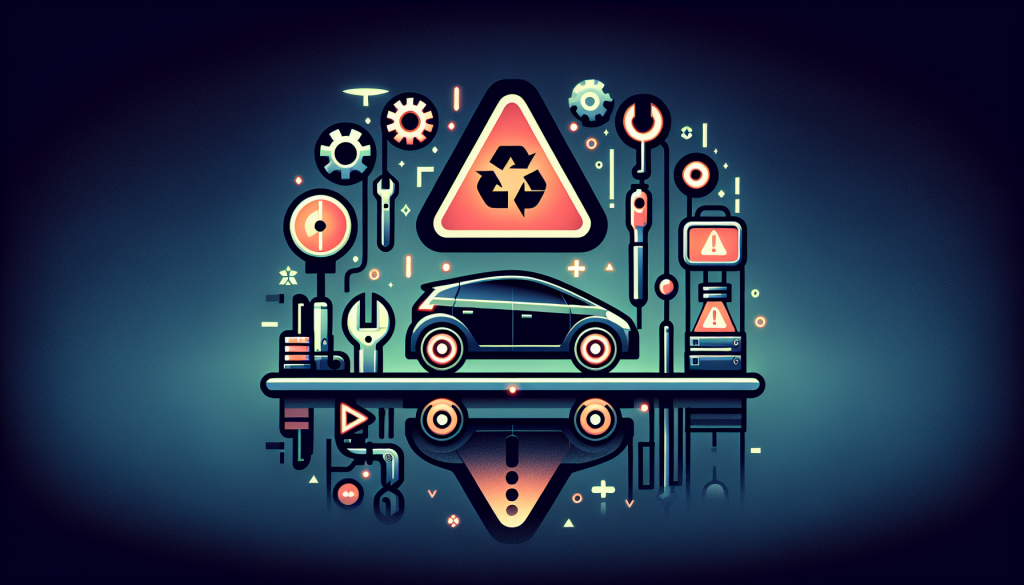Understanding Warning Lights
Importance of Addressing Warning Lights
Warning lights on a hybrid vehicle’s dashboard serve as critical indicators of potential issues or malfunctions. Ignoring these warnings can lead to costly repairs, compromised safety, and even breakdowns on the road, which could be life-threatening (VehicleCare). Addressing problems when they first occur is often less expensive than waiting until they cause significant damage. For more information on specific warning lights, visit our guide on hybrid vehicle warning lights symbols.
Many warning lights are directly related to your vehicle’s safety systems. Ignoring these warnings puts not only your car at risk but also your safety and the safety of others on the road (VehicleCare). Regularly servicing your car based on these warnings helps extend its lifespan, ensuring you get the most out of your investment. For an in-depth look at common warning lights, check out our article on common hybrid vehicle warning lights.
Preventive Maintenance for Longevity
Preventive maintenance is essential for the longevity and optimal performance of hybrid vehicles. Warning lights often signal the need for preventive car maintenance. Regularly addressing the issues highlighted by these lights reduces the risk of unexpected vehicle failures, ensuring that your car remains reliable and roadworthy.
Here are some preventive maintenance tips to keep your hybrid vehicle in top shape:
- Regular Inspections: Schedule regular inspections to check the health of key components like the battery, alternator, and coil belts. For more details, visit our page on hybrid vehicle warning lights diagnosis.
- Timely Servicing: Follow the manufacturer’s recommended service intervals. This includes oil changes, fluid top-ups, and system diagnostics. Learn more about effective troubleshooting in our ev warning lights troubleshooting guide.
- Battery Maintenance: Ensure the battery terminals are clean and free from corrosion. A failing battery can trigger warning lights and affect the overall performance of the vehicle’s electrical system. For specific fixes, visit our section on hybrid vehicle warning lights fixes.
- Software Updates: Keep your vehicle’s software up to date. Manufacturers frequently release updates to improve performance and address known issues.
| Preventive Task | Frequency | Benefits |
|---|---|---|
| Regular Inspections | Every 6 months | Identifies potential issues early |
| Timely Servicing | As per manual | Maintains optimal vehicle performance |
| Battery Maintenance | Every 3 months | Ensures reliable power supply |
| Software Updates | As released | Improves system functionality and security |
Implementing these preventive measures helps keep your hybrid vehicle running smoothly and efficiently. For more information on maintaining your EV or hybrid, check out our article on ev warning lights maintenance.
Common Issues and Solutions
Hybrid vehicles come with their own set of warning lights that can sometimes be puzzling for owners. However, addressing these lights promptly is crucial for maintaining the vehicle’s health and ensuring safety. Let’s delve into some common issues and their respective solutions.
Battery Light Concerns
When the battery light comes on, it usually indicates a problem with the vehicle’s charging system. This can be caused by issues with the alternator, coil belts, or battery terminals (JustAnswer). Here are some steps to address this concern:
Steps to Diagnose and Fix Battery Light Issues:
- Check the Alternator: Ensure that the alternator is functioning correctly. A faulty alternator can lead to the battery not charging properly.
- Inspect Coil Belts: Look for any signs of wear or damage in the coil belts. A damaged belt can impede the alternator’s performance.
- Examine Battery Terminals: Ensure that the battery terminals are clean and securely connected. Corroded or loose terminals can disrupt the charging process.
Battery Light Diagnostic Table
| Component | Common Issue | Solution |
|---|---|---|
| Alternator | Faulty performance | Replace or repair alternator |
| Coil Belts | Wear and tear | Replace damaged belts |
| Battery Terminals | Corrosion or loose connection | Clean and tighten terminals |
Ignoring the battery light can lead to costly repairs and even cause the vehicle to break down unexpectedly. For more information on ev warning lights troubleshooting, visit our dedicated guide.
Hybrid System Malfunction Warnings
A hybrid system malfunction warning can be alarming and often signifies a problem within the vehicle’s hybrid system. This can range from issues with the electric motor to problems with the hybrid battery or control unit. Addressing these warnings promptly is essential to avoid significant damage and ensure the vehicle’s performance.
Common Causes of Hybrid System Malfunction Warnings:
- Electric Motor Issues: Problems with the electric motor can trigger the warning light. This might require a diagnosis using a hybrid vehicle warning lights scanner.
- Hybrid Battery Problems: A failing or damaged hybrid battery can also cause this warning. Checking the battery’s health and performance is crucial.
- Control Unit Faults: The hybrid control unit may experience glitches or failures, which need addressing by a professional.
Hybrid System Malfunction Diagnostic Table
| Issue | Symptom | Solution |
|---|---|---|
| Electric Motor | Reduced performance | Diagnose and repair motor |
| Hybrid Battery | Warning light on | Test and possibly replace battery |
| Control Unit | Inconsistent hybrid system behavior | Reprogram or replace control unit |
Ignoring these warnings can compromise the safety and longevity of your hybrid vehicle (VehicleCare). Regular preventive maintenance can help mitigate these issues and extend the lifespan of your vehicle. For more insight into hybrid vehicle warning lights solutions, check out our detailed article.
By understanding these common issues and their solutions, hybrid vehicle owners can better maintain their vehicles and ensure a smooth driving experience.



